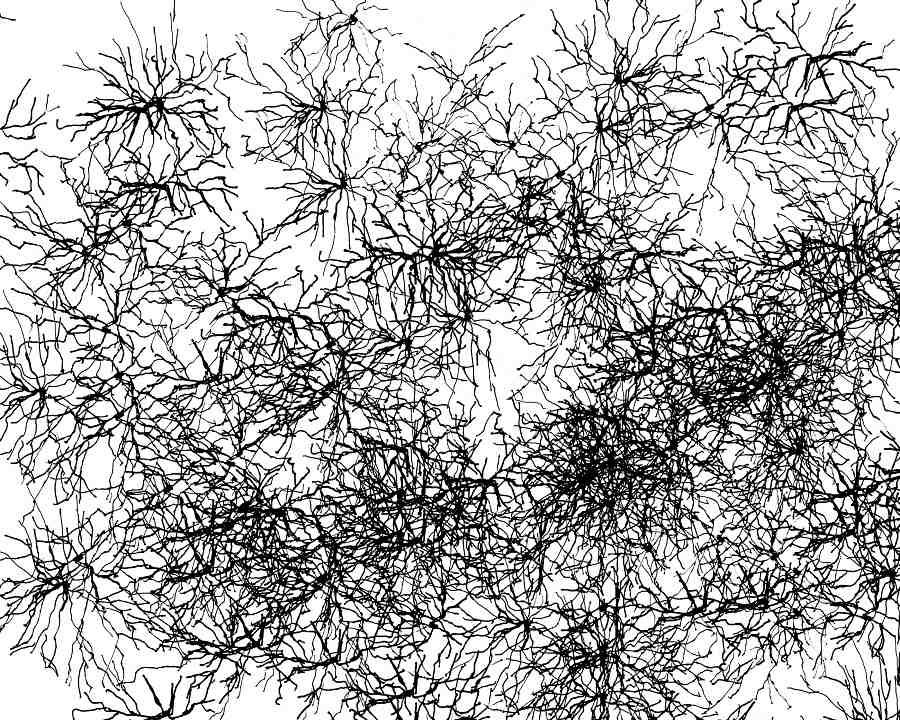The Limbic System – Faster Than You Think
There’s a good reason why your limbic system is often called the “emotional brain”.
Not only does it control all the emotions that you feel, but it also processes information much faster than your conscious mind.
This means that if something happens that you need to react too quickly, your limbic system will take over and handle things without you even having time to think about them.
Fast and unconscious reactions can be a lifesaver in some situations
Too fast conclusions and reactions can also lead to impulsive decisions or reactions that you might later regret.
With that in mind, it’s easy to see why we tend to put a lot of trust into our limbic system – and sometimes not enough into our conscious minds.
If you ever feel like your emotional side is taking over, or if your thoughts seem cloudy or fuzzy, try getting as much information as possible before rushing to any conclusions.
Taking some time to analyze things can be the difference between reaching an accurate conclusion and jumping to the wrong one.

Limbic system warning – entered the curve too fast
The science behind the “emotional brain”
While we often view emotions as intangible forces within us that we can’t really understand, they actually serve a very useful purpose: To help us react quickly without having to think about it.
The science behind the triune brain
The triune brain is a model that divides the brain into three sections: the reptilian brain, the limbic system, and the neocortex. Each section has different functions and performs different tasks.
The reptilian brain is responsible for basic functions such as breathing, heart rate, and digestion. It is also responsible for survival instincts such as aggression, fear, and territoriality. It is responsible for emotions and memory. It is also responsible for connecting the body with the environment. The neocortex is responsible for thought and reasoning. It is also responsible for moderating the activities of the other two parts of the brain.
Faster than the neocortex
The limbic system is considered to be faster than the neocortex. This is because it is responsible for emotions which are faster than thoughts. Therefore, it often overpowers the neocortex during times of stress or other strong emotions like anger or sadness.
Faster than the conscious mind
The fact that the limbic system, which controls our emotions and actions, is faster than the conscious mind means that it affects normal decision-making processes. This is because emotional reactions are processed more quickly than our rational thoughts. For example, if there was a dog barking at somebody passing by he would likely see its teeth before thinking about how cute it looks but only realizing it after reacting to its teeth (lunge). Our behavior during stressful situations can be explained through this model. Since the vertebrate brain has evolved from the reptilian brain, it is still governed by the principles of the fight-or-flight response.
Lot’s of energy used for different activities
The limbic system uses more energy than the neocortex for performing various tasks. The human brain uses 20% of the body’s total energy intake. The limbic system makes up a larger percentage of that energy use compared to the neocortex. This means that heightened emotional experiences consume more energy compared to rational thought processes. For example, emotions are responsible for feelings like fear which requires intense focus and creates tension in our bodies even if we are not doing anything physically strenuous.

What does an apple taste like?
It also affects how food tastes
Emotions can affect our appetite by creating cravings or causing us to lose our appetite. Emotions can also affect how food tastes. For example, sweet foods may taste sweeter when we are feeling happy, while sour foods may taste more sour when we are feeling angry. This is because the limbic system is responsible for processing sensory information from the environment.
So what does the limbic structure mean for us?
The fact that the limbic system uses more energy than the neocortex means that we need to be aware of our emotional state when making important decisions. Our emotions can often override our rational thoughts, so it is important to be aware of how we are feeling when making a decision. We also need to be mindful of the types of foods we eat and how they might affect our emotions. For example, we may want to avoid sugary foods in the afternoon when we are feeling tired because they might make us feel more tired.
The cerebral cortex – the relatively slow thinker
The cerebral cortex is the outer layer of the brain that is responsible for higher-level functions such as thinking, reasoning and language. It is divided into four lobes – the frontal, parietal, temporal and occipital lobes. The frontal lobe is responsible for executive functions such as planning, organizing and regulating emotions. The parietal lobe is responsible for processing sensory information such as touch, taste and smell. The temporal lobe is responsible for processing auditory information and the occipital lobe is responsible for processing visual information.
Billions of neurons inside of this complex neural network
The cortex is a complex structure that consists of billions of neurons. It takes time for these neurons to send messages to each other, which is why the conscious mind is slower than the limbic system. It is our emotional center. It controls our feelings, moods and motivations, anything that motivates us to act. The limbic system consists of the hippocampus, amygdala, hypothalamus and septum. The hippocampus is responsible for memory whereas the amygdala regulates emotions such as fear, anger and pleasure. The hypothalamus regulates hunger, thirst and also has an influence on sex. Finally, the septum moderates aggression between individuals by releasing calming neurotransmitters like serotonin
The cortex communicates with the rest of the body via neurons in the thalamus (just above it).

Upper regions and lower regions in the brain
There are two types of neurons involved:
- The upper motor neurons that communicate from the brain to other parts of the body via lower neurons that communicate from other parts of the body to the brain.
- The lower neurons relay messages to the spinal cord and from there they are relayed to the target muscles.
Why is the conscious mind is slower than the limbic system?
The human thinking is slower than the reptilian mechanisms, because it takes time for the cortex to process information and send messages to other parts of the body. The limbic system, on the other hand, is controlled by the hypothalamus which is located in the brain stem. The hypothalamus is a very small structure and it processes information very quickly. This is why the limbic system is faster than the conscious mind.
So next time you make a decision based on your emotions, you can be thankful that your faster limbic system is in control!
Stress – enemy or friend?
Stress is one of the biggest effects on our limbic system. Stress increases levels of cortisol, which is responsible for stress responses like increased heart rate and breathing. When physical signs of stress, such as rapid heartbeat or shortness of breath, are present it makes it difficult for us to think rationally because of the change in blood flow around the brain. This means that being stressed out can have a negative impact on our decision-making abilities. The more intense the situation, the harder it will be to perform tasks requiring focus and attention.

Drawing of brain cells
Responsible for emotional responses
Most people think that the conscious mind is faster than the limbic system.
This is not true.
In fact, the limbic system can often respond much faster to emotional situations than the conscious mind. This is because it is part of the brain’s automatic response system. It reacts quickly and instinctively to danger or threats, whereas the conscious mind may take longer to process information and make a decision.
This is why people often have gut feelings or ‘instincts’ about things. These feelings are actually caused by the limbic system reacting to a situation before the conscious mind has had a chance to process it. For example, if you see someone walking towards you with a knife, it will react immediately, causing you to feel scared or anxious. The conscious mind may not even realize that there is danger until after the person has already passed by.
So next time you have a strong emotional response to something, remember that it’s the limbic system at work, and not your conscious mind. The autonomic nervous system
The autonomic nervous system is responsible for controlling all of the body’s involuntary functions, such as heart rate, digestion, and respiration. It consists of two subsystems: the sympathetic nervous system and the parasympathetic nervous system.
The sympathetic nervous system is responsible for activating the body’s “fight or flight” response, while the parasympathetic nervous system is responsible for slowing it down and restoring balance.
The limbic system is a subsection of the brain that controls the autonomic nervous system. It is faster than the conscious mind, and can react much more quickly to threats or emergencies. This is why the limbic system is often called the ” lizard brain – because it is essentially responsible for keeping us alive, in the same way that a lizard’s brain controls its autonomic functions.
The limbic system is also responsible for our emotions and memories. So when you’re feeling scared or anxious, it’s the limbic system that’s responsible. And when you’re remembering your childhood holiday, it’s the limbic system that’s doing the work.
So next time you’re feeling overwhelmed or stressed out, remember that it’s your pesky little lizard brain that’s to blame! There’s nothing wrong with you – it’s just how your brain is wired. Try to take a step back and understand what your limbic system is trying to tell you, and then find a way to address the problem. You’ll be surprised at how much better you feel once you’ve figured it out.
“This doesn’t make any sense!” I thought as the limbic system began to panic – again – even though my conscious mind knew there was no immediate threat. It happened every time I drove across a bridge; which, luckily for me, wasn’t very often. But whenever it did happen, and my breathing and heart-rate went through the roof, it brought back memories of that horrific day ten years ago… The stress was unbearable. As if the car in front hadn’t slowed down quick enough at one of those bridges; as if we were bumper to bumper with nowhere to go; as if someone had cut me off and taken away my only escape.
A set of deep brain structures that generate emotion and influence behavior, especially in relation to survival and reproduction.
The Limbic system includes the hypothalamus, cingulate cortex, hippocampi (all near the center of your brain), as well as other nearby limbic regions such as the amygdala that connect with more far-flung areas like the prefrontal cortex and basal ganglia – playing a role in human consciousness.
Although you experience this system at work every day – often without knowing it – it is responsible for critical tasks like making decisions and formulating memories. So I’m sure you can appreciate why we tend to think of emotions like fear happiness rather than the limbic system itself.
It is a set of deep brain structures that generate emotion and influence behavior, especially in relation to survival and reproduction. It includes the hypothalamus, cingulate cortex, hippocampi (all near the center of your brain), as well as other nearby limbic regions such as the amygdala that connect with more far-flung areas like the prefrontal cortex and basal ganglia – playing a role in human consciousness – which we also see active during dreaming.
Although you experience this system at work every day – often without knowing it – it is responsible for critical tasks like making decisions and formulating memories. So I’m sure you can appreciate why
The limbic system is responsible for our emotions and memories, and it can react much more quickly to threats or emergencies than the conscious mind. This is why the limbic system is often called the ” lizard brain – because it is essentially responsible for keeping us alive, in the same way that a lizard’s brain controls its autonomic functions.
When I was finally able to identify what was happening – and understand that it was just my pesky little lizard brain freaking out again – I felt a wave of relief wash over me. It wasn’t anything to be ashamed of; it was just how my brain was wired. And once I understood that, I could find ways to address problem. Maybe there wasn’t an immediate
The associated structures
The associated strucures and its function in the brain: The limbic system is considered to be the emotional center of the brain and is involved in motivation, emotion and long-term memory. Some structures of the limbic system are: amygdala, hippocampus, thalamus (and mammillary bodies), hypothalamus (with the mamillo-thalamic tract) and cingulate gyrus.

Hardwired connections in the brain
What does this mean for the emotional nervous system?
The emotional nervous system is constantly interacting with the environment, and it reacts much faster than the conscious mind. This is why we can sometimes have a “gut feeling” about something, or why we may suddenly feel afraid or happy for no reason. The emotions are being driven by the limbic system, which is reacting to the environment much more quickly than the conscious mind.
This also means that the limbic system can often override the decisions of the conscious mind. If you’re trying to make a decision but you’re feeling anxious or scared, it may override your decision and cause you to do something that’s not in your best interests. This is why it’s so important to listen to your emotions and understand what they mean.
When making a decision, it’s important to understand what you’re feeling and why you’re feeling it so that the limbic system doesn’t override the conscious mind and make decisions for you. That way, you can make an informed decision based on your own morals instead of letting your emotions control you.
What about the brainstem?
The brainstem is responsible for keeping us alive by regulating certain functions like breathing, heart rate, etc., but there are not any higher level processes that are controlled here. There are other structures in the lower parts of the brain which are able to influence our emotions or sensations (like touch), but these aren’t true cognitive processes that could be
The limbic system is responsible for the emotional responses that we have. This includes things such as fear, happiness, sadness and anger. When something happens that triggers one of these emotions, the limbic system will respond very quickly. In fact, it can often respond before the conscious mind has had a chance to even process what is happening. This is why we sometimes experience strong emotions without knowing why – our limbic system has already reacted to something that happened without us being consciously aware of it.
This can be a good thing or a bad thing, depending on the situation. For example, if you see someone you love crossing the street and you suddenly feel overwhelmed with happiness, that’s your limbic system at work.
What does these brain structures mean for us?
For us, it means that emotions that we feel without thinking about them or deciding what to do come from these structures in a split second! Because they are connected directly to areas responsible for muscle movement and responses such as fight or flight. Thus it makes sense why you’d get a rush of adrenaline when you’re nervous, for example.
The limbic system is a very powerful structure that can often override the decisions of your conscious mind. This can be a good thing if you’re truly feeling positive emotions – then it’s just nice to have a rush of energy! On the other hand, this can be a bad thing if you’re experiencing negative emotions because these structures will respond before you have time to process what you’re feeling or think about what’s going on. In those situations, it’s best to understand why you’re feeling the way that you do so that your unconscious brain doesn’t make decisions for you. If your limbic system is making all of your decisions for you, how are you supposed to make any progress in life?
The limbic system is just one aspect of the brain, but it’s an important one. It’s responsible for our emotions and reactions, which can often override the decisions of the conscious mind. This means that it’s important to understand what you’re feeling and why you’re feeling it so that you can make informed decisions instead of letting your emotions control you. So the next time you’re feeling something strong, take a second to think about what’s going on and why you’re feeling that way. It might help you to better understand yourself and make progress in your life.
The limbic system is responsible for the emotional responses that we have. This includes things such as
What exactly is this part of the brain all about?
It’s basically a set of structures in the brain that deal with emotions, memory, motivation and arousal. It sits just above your brainstem and it’s connected to quite a few other parts of your brain, including your hypothalamus, thalamus, amygdala and hippocampus.
The limbic system itself is surrounded by several structures called the basal ganglia, which are responsible for coordinating movement. This provides an indication of how important these structures are for physically acting on what you feel rather than just thinking about doing something about it.
Your conscious mind is actually much slower than the limbic system because although there are things that only it can do, most of its functions have nothing to do with emotions or decision-making. Your limbic system doesn’t require any instructions before it starts reacting to things – all you need to do is feel something, and it will act.
Of course, you can still influence how your emotions act. The limbic system doesn’t have any real control over things either – it just reacts based on the information it receives from other parts of the brain. This includes stimuli from your five senses as well as memories of past experiences or knowledge about the world around you.
It is possible to “control” feelings by presenting these memories in a different perspective, by thinking about something else entirely or even through physical actions that change the way you feel. But making conscious decisions for example about what actions are appropriate in a specific situation mean that you have to think about them rather than rely on your limbic system alone.

Deleting or overriding memories impossible
Never try to force the limbic system to delete thoughts
You will have the opposite effect. The limbic system will try even harder to get the thoughts back.
The last thing you want to do is make your thoughts public. And you definitely don’t want everybody who happens to read them to be able to influence your emotions directly from that point on! If this starts happening, it’s a strong sign that you have some issues with maintaining control over your own body and mind. That means it’s high time you address those issues so nobody else can use them against you!
- It is possible however to “detach” yourself from certain feelings while allowing others. This only works when there is no emotional attachment associated with the feeling in question. In many cases, protecting yourself emotionally just comes down to being honest about what exactly you’re feeling and why; as well as determining whether those feelings are willing to work for you, or against you.
- The Limbic system is responsible for basic emotions and drives, such as hunger, thirst and sex. It is also responsible for controlling the body’s fight or flight response. The Limbic system is therefore a very important part of the brain, and it is also very fast.
- The Limbic system can respond to stimuli much faster than the conscious mind. This is because the conscious mind takes time to process information, while the Limbic system reacts instantaneously to stimuli. This means that the Limbic system can control the body before the conscious mind even has a chance to react.
- It is a complex set of structures in the brain that play a role in emotional responses, memory formation and decision-making. It is often called the “emotional brain”, as it is responsible for our feelings and reactions.
- The limbic system is much faster than the conscious mind. This means that it can react to stimuli before we are even aware of them. For example, if you see someone you know walking down the street, your limbic system will recognise them and you will feel happy before you have even had time to think about it.
- This is because the limbic system is hardwired into our brains, while the conscious mind can only process information slowly.
One of the most fascinating aspects of the human brain is its ability to operate on two different levels. There is the conscious mind, which is the part that we use to think and make decisions; and then there is the limbic system, which is responsible for all our emotions and reactions.
The Limbic system is always working in the background, processing information and preparing us for action. It’s much faster than the conscious mind, which is why we can often react emotionally before we’ve even had time to think about it.
This can be a good thing – it allows us to respond quickly in dangerous or emergency situations. But it can also lead to problems if’re not aware of it.
For example, you may meet someone and automatically like them or dislike them before you’ve had a chance to think about it consciously. This is because the limbic system is processing their appearance and making an assessment based on your previous experiences of people who look similar – whether they were good for you or not.
If this happens enough times, your brain will start developing prejudices against certain types of people without even realising it. Only when you begin to monitor how certain emotions make you feel can you learn what things are triggering them in others . It’s only then that you can make conscious decisions about how much weight to give to them when judging other individuals or groups of people – instead of letting your emotions get the better of you.
Making the right decision is sometimes about acting on instinct, but it’s also important to recognise that your emotions can lead you astray if you just follow them blindly! By allowing yourself time and space for reflection, especially before reacting emotionally, you give yourself the chance to make better decisions.
And this isn’t limited to emotional perception; it’s also true with physical sensation. The limbic system responds more quickly than conscious thought does – change in temperature or pain registers first in the body even before we’re aware of it (ie the woman who got a cut on her finger before she noticed her ring was stuck). And this goes for pleasure as well; erogenous zones are triggered by intense feelings of pleasantness long before we consciously realize what’s going on.
So the next time you feel yourself getting worked up about something – take a step back, and ask yourself if that reaction is really coming from a conscious decision, or if it’s just your limbic system in overdrive. It can be helpful to talk to someone about how you’re feeling, or even write down your thoughts in a journal so you can get some perspective. The more you understand how your emotions work, the better decisions you’ll be able to make in all aspects of your life!
The limbic system as picture database
When we look at a picture, we see the colors and the shapes. These come together to give us a pretty good idea about what that object is. In the 1950s, some scientist tested this using as stimuli black and white pictures of cats and dogs. Most people said they could identify those animals with very high accuracy—and yet, there were no cats or dogs in those photos, just their outlines! The reason why these outlines looked like cats or dogs was because this information comes from our limbic system first (the part of our brain responsible for emotions), before it reaches our conscious mind which takes on the task of identifying them. When we recognize something as being familiar, it is coming from our limbic system first. The signal goes through some more processing in the thalamus before it reaches the conscious centers of the brain. This explains why these shapes looked so familiar to people, even though they had never seen them before.
How the limbic system can be beneficial in some cases, and how to better understand your emotions in order to make sound decisions.
The limbic system is responsible for all our emotions and reactions, which means it can often act faster than the conscious mind. This can be a good thing – it allows us to respond quickly in dangerous or emergency situations. But it can also lead to problems if’re not aware of it.
For example, you may meet someone and automatically like them or dislike them before you’ve had a chance to think about it consciously. This is because the limbic system is processing their appearance and making an assessment based on your previous experiences of people who look similar – whether they were good for you or not.
How to utilize the limbic system in a way that shows it’s benefits
The limbic system is sometimes compared to an animal, which you need to tame if you want it to work for you. This part of your brain functions faster than conscious thought. The result of this is that our decisions are often made at a subconscious level before we become aware that we’ve decided something – this can be useful, but also dangerous in some circumstances where we might not be able to explain or justify our actions to others (or even ourselves). Understanding why we make certain decisions and how quick and hard-to stop they can be could help us regulate them better and lead to more effective problem solving in many areas.
Taming the animal is achieved by identifying which stimuli trigger subconscious reactions – this can be anything from certain words or sounds, to images of people’s faces, to the brand of the alcohol you drink. By practicing recognising these triggers, it becomes easier to stop them before they lead you into doing something that you regret. For example, comparing brands on each bottle before buying will help prevent an impulsive purchase driven by a desire for instant gratification.
This part of your brain is constantly analysing things for danger and reward – if it detects either one it sets off your fight/flight/freeze response which automatically stimulates your body with hormones causing changes in breathing rate, heartrate etc. This means that no matter how hard we try, our brains are always looking out for our safety and wellbeing.
The limbic system is also responsible for creating emotions, and it’s these emotions that often drive our decision making. Fear, joy, anger and sadness can all override our logical thinking, leading us to make choices we might not otherwise make. This is why it’s so important to be aware of the kind of emotions we’re experiencing if we want to avoid being tricked by them into doing something we’ll regret later on.
So, how can you use all of this information to your advantage? Well, firstly by understanding how the limbic system works you can start to become more self-aware – recognising your own triggers and emotional states will help you better regulate your behaviour. Secondly, try and develop a deeper understanding of the people you interact with on a daily basis – this will help you predict what kind of decisions they are likely to make, which will in turn help you avoid being manipulated by them. Finally, try and identify when other people are trying to manipulate you – there are lots of clues that give people away, but it takes practice. The more effort you put into becoming self-aware and self-regulation, the easier it becomes!
Why pictures in mind are always faster than words
The Limbic system is responsible for creating and storing memories, as well as processing emotions. It is also much faster than the conscious mind. This means that when you see or think about something, the images will be processed much faster by the limbic system than if you tried to process it using words.
This is because the limbic system is pre-wired to respond quickly to visual information, whereas the conscious mind takes a little longer to understand and analyze things. This is because the brain has evolved over time to prioritize survival over more complex tasks such as thinking and analyzing. The limbic system therefore reacts much more quickly to visual cues than the conscious mind, which is why pictures are always faster than words.
So when you see something, your limbic system processes the image much faster than if you were to describe it using words. This is because it takes less time for the brain to understand what an image is than to use language and reason about that image.
The Limbic system is responsible for creating and storing memories, as well as processing emotions. It also happens to be much faster than the conscious mind: when we see something, our limbic system processes it much more quickly than if we tried to process it with words. However, there are many things in this world which require a conscious effort in order to make sense of them; this is why pictures in mind always come before words [if needed].
What Benjamin Libet wrote about the limbic system
In his study, Benjamin Libet found that the conscious mind takes a little longer to understand and analyze things. This is because the brain has evolved over time to prioritize survival over more complex tasks such as thinking and analyzing. The limbic system therefore reacts much more quickly to visual cues than the conscious mind.
This means that when you see something, your limbic system will process the image much faster than if you tried to process it using words. This is because it takes less time for the brain to understand what an image is than to use language and reason about that image. So while the conscious mind may take a little longer to understand something, the limbic system can react much more by processing information visually.
This is why pictures always come before words, as the limbic system is much faster at understanding them. Ultimately, this means that we can react more quickly to things that we see in the world around us. The limbic system is therefore an important part of our brain that helps us to process information quickly and efficiently.
In his study, Benjamin Libet found that the conscious mind takes a little longer to understand and analyze things. This is because the brain has evolved over time to prioritize survival over more complex tasks such as thinking and analyzing. The limbic system therefore reacts much more quickly to visual cues than the conscious mind.
This means that when you see something, your limbic system will process the image much faster than if you tried to process it using words. However, there are many things in this world which require a conscious effort in order to make sense of them; this is why pictures in mind always come before words.
This is because it takes less time for the brain to understand what an image is than use language and reason about that image. The limbic system reacts much more quickly to visual cues than the conscious mind does. So while the conscious mind may take a little longer to understand something, the limbic system can react much quicker by processing information visually. Ultimately, this means that we need our limbic systems intact so that we can process visual information as quickly as possible. This helps us to respond more efficiently to life around us.
Location
The amygdala is located deep within the medial temporal lobe of the brain. It is separated into two regions, or nuclei: the lateral nucleus and the central nucleus. Both are involved in aspects of emotional behavior that are supported by sensory input from all senses except smell. The most well understood function of the amygdala involves fear and emotion. With this being said, the majority of research on this subject is done with animal models rather than humans because it can be difficult to separate effect caused by direct stimulation versus stimulation caused by stress or fear.
Ho to communicate with the amygdala? Visit the Amygdala-la-Website
Anxiety mechanism – why we have anxiety without thinking about
Did you know that your decisions are mostly made in an emotional reaction? You make these fast emotional decisions, and then your conscious mind comes up with the logical reasons to back them up. This process is not only unconscious but also uncontrollable.
The reason it’s hard to be rational all the time is because of something called “reptilian brain”, or more specifically, Limbic system which is our oldest part of what makes us human (Wikipedia). Our limbic system goes into reaction before we become aware of what’s actually happening around us. And because the limbic system has a very narrow focus, it can’t see anything else than its reaction – so it’ll act under any circumstances without waiting for control from other parts of our brain.
This is why we get so emotional and irrational when we’re stressed – our limbic system takes over and makes decisions without involving our conscious mind.
Fortunately, we have a rational part of our brain that can override the limbic system’s reactions. But it’s not always easy to do, especially if we’re under a lot of stress. So next time you find yourself getting really upset about something, know that it’s not your fault – it’s just your brain reacting automatically! And try to take a step back and think about the situation rationally, even if it’s hard to do in the moment. You may not be able to change your emotions, but you can at least make some intelligent decisions based on them instead of just reacting to them.
But the next time you find yourself acting fast and without thinking, remember that it’s not your fault! Limbic system is only doing what it’s supposed to. It takes conscious action on your end not to act under its control.
Milton H. Erickson’s hypnotherapy – the door to the unconscious
Milton H. Erickson was a clinical psychologist and one of the founders of hypnotherapy. He developed many innovative techniques, including hypnosis-induced amnesia, confusion techniques, and indirect suggestion. His methods were considered very unorthodox at the time and he was often criticized by his peers. However, he was able to achieve some very impressive results with his patients.
One of Erickson’s most famous cases involved a young girl named Christy. Christy was suffering from severe asthma and her doctors had told her she would probably never be able to lead a normal life. Erickson successfully treated her with hypnotherapy and she was eventually able to live a normal life without any further problems.
So what is it that makes Erickson’s results so impressive?
The answer becomes obvious if we take a closer look at what actually goes on during hypnosis.
Hypnosis is basically like entering an alternative state of mind where our brains are wired up in a completely different way than normal. And because it is done through self-induced trance states, the person experiencing hypnosis tends to be almost entirely unaware of what is happening. This means that he or she can’t consciously interfere with the process or realize when something might go wrong later on. In other words, the conscious mind simply loses its ability to control things which makes us vulnerable to unusual influences and suggestions from people who know how this works.
This effect serves as a powerful tool for therapists
We all know how important rational decisions are in our lives; we often worry about making the right choices at the right moment. But sometimes it’s hard for us to make logical correctly because our brain works much
Nucleus accumbens
The nucleus accumbens is a small, almond-shaped structure located in the basal ganglia of the brain. It plays a important role in the pleasure and reward system by releasing dopamine into the brain. This neurotransmitter is responsible for feelings of happiness, satisfaction and pleasure.
So what does the Nucleus accumbens have to do with hypnosis?
Well, it turns out that the nucleus accumbens is also very sensitive to suggestion. This means that suggestions given during hypnosis can be very powerful and can often produce results that are much stronger than those achieved through conscious reasoning alone.
This is because the unconscious mind is more easily influenced than the conscious mind and it’s also less likely to be skeptical or question things that don’t make sense.
So if you want to achieve a particular goal or outcome, it’s often a good idea to suggest it to your clients in a way that bypasses their conscious mind and goes straight to their unconscious. This is where hypnosis can be so powerful.
Why self-help-books must contain pictures
There has been a lot of research on how pictures affect the brain, and it’s clear that they play a very important role. One study found that pictures can actually speed up our thinking process, and another found that pictures can help us learn and remember things faster.
This is because the brain processes pictures much faster than it does text. The limbic system, which is responsible for our emotions and memories, is much faster than the conscious mind. When we see a picture, the limbic system immediately starts to process it, whereas the conscious mind takes a bit longer to understand the information.
This is why it’s so important for self-help books to contain pictures – they help us to learn and remember the information faster. And it’s not just self-help books that benefit from pictures – any type of book or article will be easier to understand if it contains images.
So next time you’re reading a book or article, make sure it has pictures! They’ll help you to understand and remember the information faster.
So there you have it – three reasons why pictures are so important in self-help books. They help us to learn and remember the information faster, they make the information more interesting, and they help us to understand the information better.
If you’re looking for a self-help book that will really help you to improve your life, make sure it contains pictures! You won’t regret it.
All e-books from the series are picture books. Take a look at the program.





